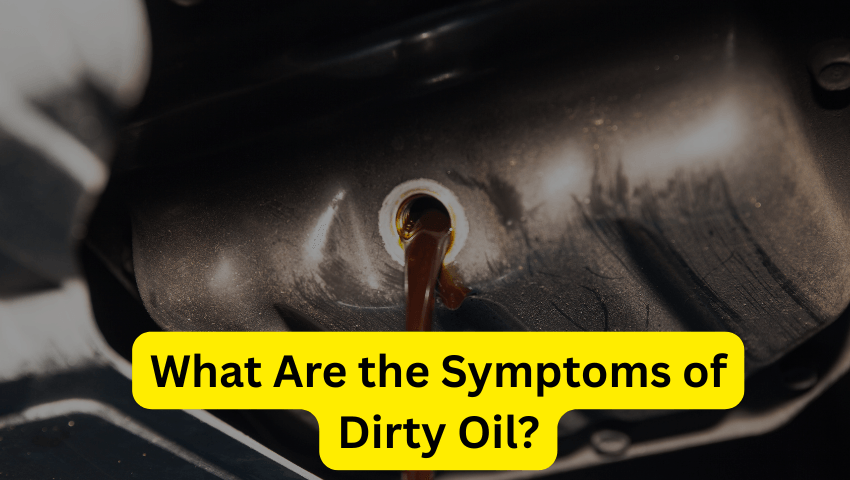Engine oil plays a vital role in keeping your car running smoothly by lubricating moving parts, reducing friction, and preventing overheating. Over time, however, oil breaks down and becomes contaminated with dirt, metal particles, and combustion byproducts.
Ignoring symptoms of dirty oil can lead to severe engine damage, costly repairs, and even engine failure. In this guide, we’ll explore the most common signs that your oil is dirty and needs changing—plus tips to keep your engine in top shape.
Top Symptoms of Dirty Oil
1. Dark, Gritty Oil
Healthy oil is amber or light brown and translucent.
Dirty oil turns dark black and may feel gritty due to contaminants.
Check your dipstick—if the oil looks dirty, it’s time for a change.
2. Engine Knocking or Ticking Noises
Dirty oil loses its lubricating properties, increasing metal-on-metal friction.
You may hear knocking, ticking, or grinding sounds from the engine.
Ignoring this can lead to bearing wear or complete engine failure.
3. Burning Oil Smell Inside the Car
If you notice a burnt oil odor, it could mean:
Oil is old and breaking down.
There’s an oil leak dripping onto hot engine parts.
A strong smell warrants an immediate oil check.
4. Decreased Fuel Efficiency
Dirty oil increases engine resistance, forcing it to work harder.
This leads to poor gas mileage—if you’re filling up more often, check your oil.
5. Illuminated Oil Warning Light
Modern cars have sensors that detect low oil pressure (often caused by dirty or low oil).
If the oil light comes on, stop driving and check the oil level immediately.
6. Engine Overheating
Clean oil helps regulate engine temperature.
Dirty oil can’t dissipate heat efficiently, leading to overheating risks.
7. Rough Idling or Poor Performance
Sludge buildup from old oil can clog engine components.
Symptoms include:
Jerky acceleration
Stalling at stops
Reduced power
What Causes Oil to Get Dirty?
Normal Engine Wear – Tiny metal particles accumulate over time.
Dust & Dirt Contamination – Poor air filtration can introduce debris.
Short Trips – Frequent cold starts prevent oil from fully warming up, leading to sludge.
Towing & Heavy Loads – Stresses the engine, breaking down oil faster.
Infrequent Oil Changes – Going beyond recommended intervals accelerates contamination.
How to Prevent Dirty Oil Damage
✅ Follow Manufacturer’s Oil Change Schedule (usually every 3,000–7,500 miles).
✅ Use High-Quality Synthetic Oil (lasts longer and resists sludge).
✅ Replace the Oil Filter with every oil change.
✅ Check Oil Monthly – Look for color, consistency, and level.
✅ Fix Oil Leaks Promptly – Low oil levels cause faster contamination.
What Happens If You Ignore Dirty Oil?
⚠ Sludge Buildup – Clogs oil passages, starving engine parts of lubrication.
⚠ Increased Engine Wear – Metal components grind against each other.
⚠ Catalytic Converter Damage – Dirty oil can lead to excessive exhaust contaminants.
⚠ Engine Failure – Complete breakdown from lack of proper lubrication.
Final Thoughts
Recognizing the symptoms of dirty oil early can save you from expensive engine repairs. If you notice dark oil, strange noises, burning smells, or performance issues, don’t delay—get an oil change immediately.
Pro Tip: Stick to a regular maintenance schedule and use high-quality oil to maximize engine life.

